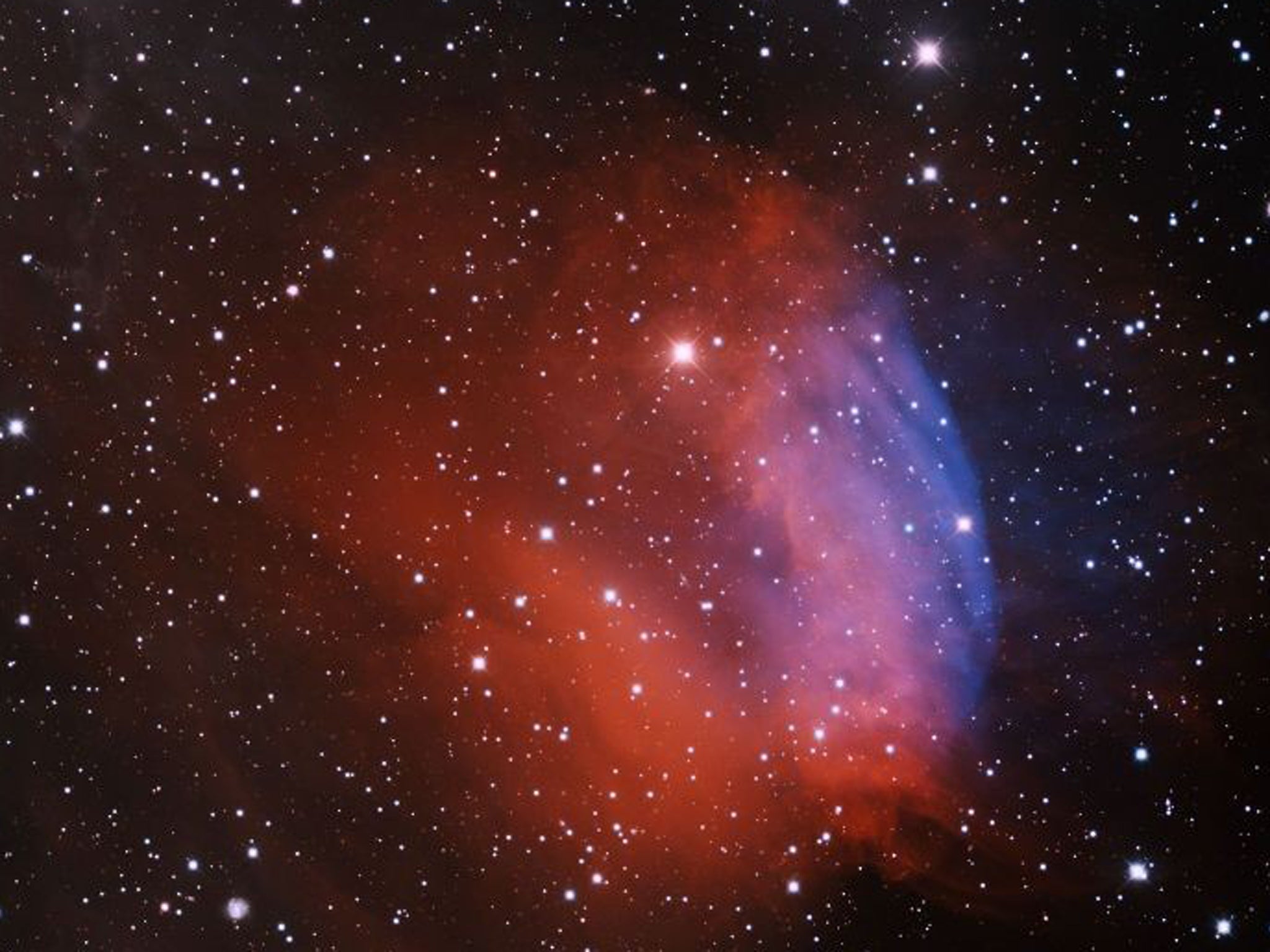Roses are red, one star is blue - even astronomers' romance shines on through

It seems that even astronomers have a romantic side.
The planetary nebula Sh2-174 gives the appearance of a red rose - or maybe a tulip - but is actually the remains of a dying star some 1,000 light years away.
Astronomers released the image on the eve of Valentine's Day.
A planetary nebula is created when a low-mass star blows off its outer layers at the end of its life.
The core of the star remains and becomes an immensely dense white dwarf.
Usually the white dwarf is found right at the heart of the nebula, but in the case of Sh2-174 it is shifted to one side. In the image, it is the blue star near the right hand edge of the nebula, where the gas turns from red to blue.
The image was taken using the Mayall four-metre telescope at Kitt Peak National Observatory in Arizona, US.
Observations were made through four different colour filters.
PA
Subscribe to Independent Premium to bookmark this article
Want to bookmark your favourite articles and stories to read or reference later? Start your Independent Premium subscription today.

Join our commenting forum
Join thought-provoking conversations, follow other Independent readers and see their replies